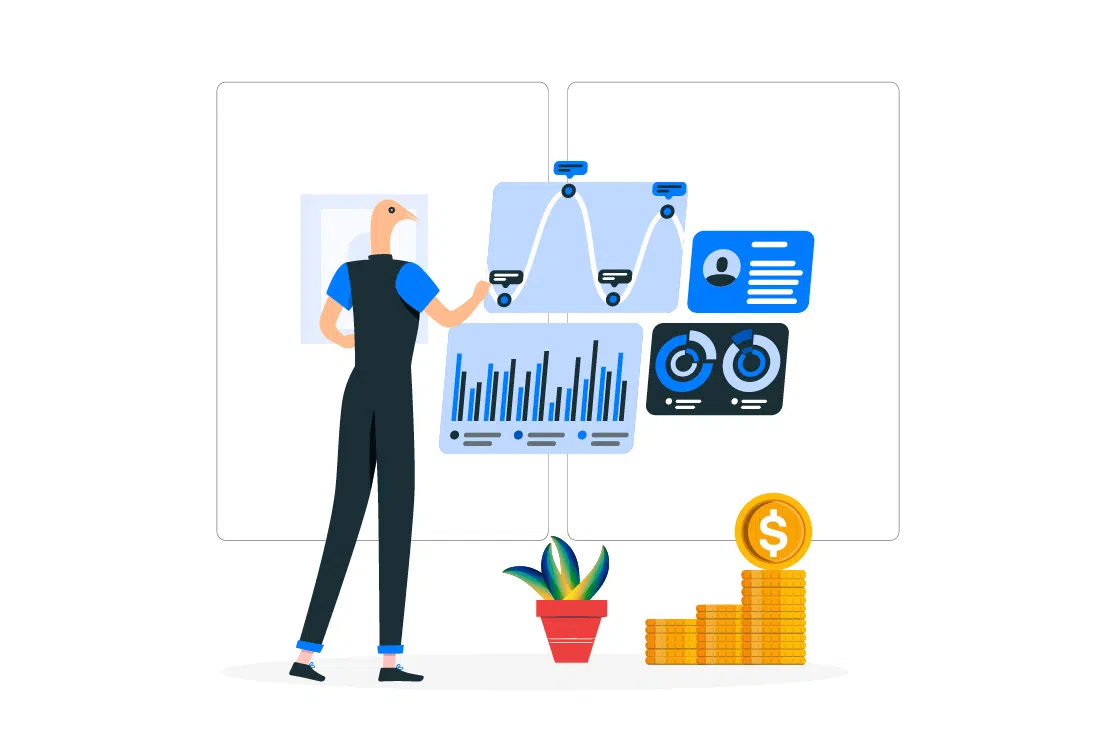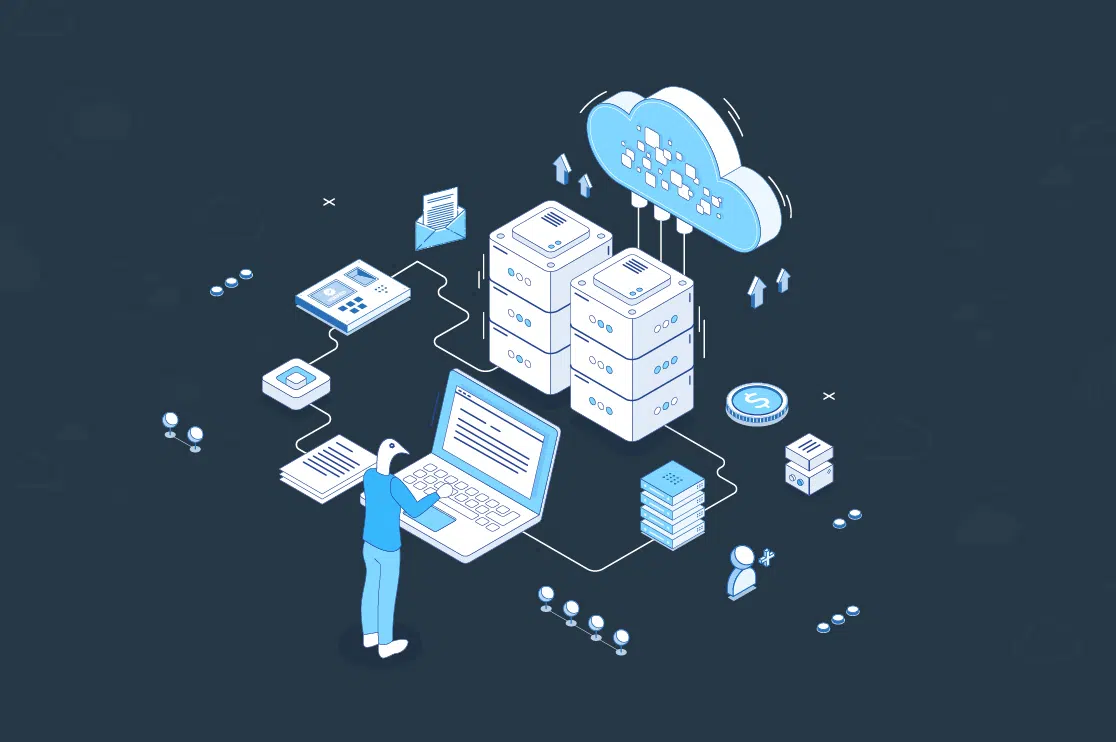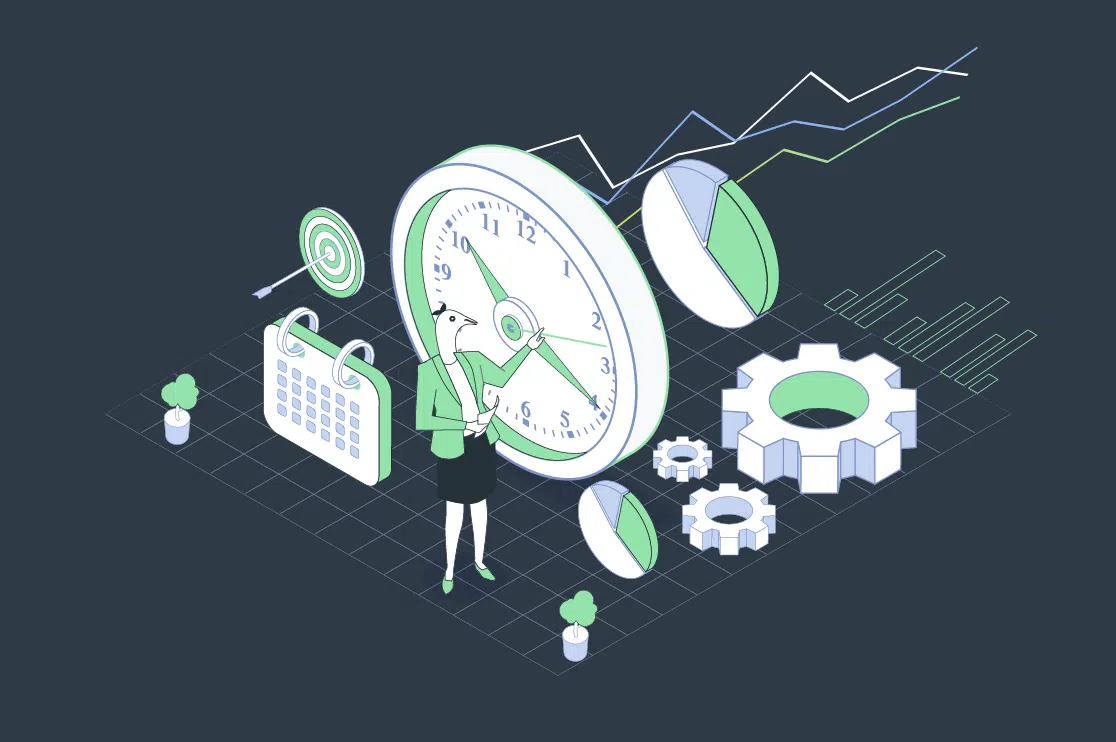In a recent example from Europe, a bank tried several programs to retain its shrinking customer base by focusing on inactive customers, but it failed. It then turned to predictive analytics to find out which current members could reduce their transactions with the bank. That led to an understanding that reduced the churn rate by about 15 percent. This is not the story of just one bank.
Even after such convincing results of financial data analytics, most banks and other financial institutions tend to keep predictive analytics in finance as a secondary option to traditional businesses of financing, investments, transactions, and payments. Decision-makers of these financial institutions probably need help remembering what banking used to be.
They can, however, recall how IT used to be just six guys in the basement with an IBM mainframe. Look at what banking and IT have become today. That shows how every revolution looks like a small affair until it becomes extraordinary. Analytics is that revolution.
Table of Contents:
What is Predictive Analytics in Finance?
It is a powerful technique that analyzes large chunks of financial data to identify trends and predict future events. Predictive data analytics for risk management uses machine learning, data mining, modeling, artificial intelligence, etc.
Predictive modeling uses regression techniques, pattern analysis, and other statistical methods to identify patterns and trends. The primary application of financial data analysis is forecasting, which enables data-driven decision-making, improves overall efficiency, and predicts and mitigates risks.
What are Predictive Analytics Models?
Predictive Analytics models assess historical data and discover trends and patterns to predict future outcomes. Some of the popularly known predictive analytics models are;
Classification Models
Classification models are a subset of supervised machine learning models. This model is used to categorize customers or prospects into segmented groups. That is based on historical data, describing relationships within a given dataset.
This model’s prominent use cases are fraud detection, credit risk evaluation, and risk analysis management. It includes decision trees, logistic regression, and neural networks.
Clustering Models
Clustering models group entities by identifying similarities and differences between them. For example, an e-commerce site can use this model to segment customers into similar groups based on similar features and personalize strategies for each group.
Time Series Models
Time series models use various data inputs at a particular frequency, such as daily, weekly, monthly, etc. The dependent variable is plotted against time to assess the data for patterns, cyclical behavior, and trends.
Unleash Insights in BluEnt: Optimize with our Data Engineering Solutions Now!
Recommended Reading:
What are the Benefits of Predictive Analytics in Finance?
Financial institutions realized the benefits of customer data analytics very early. Of late, enterprises have been turning to predictive analytics for better decision-making. PwC has termed it the “future of financial software.”
Large chunks of data are processed by finance every day. People at the helm of these organizations understand the power of drawing intelligent insights from this data.
Finance leaders have always relied on knowledge and proven business models to deliver. It has disrupted these legacy methods. BluEnt data engineers can utilize your financial data for you in the most efficient manner.
Financial organizations that adopt predictive analytics in corporate finance are set to reap its benefits. Some of these are;
Organizational Agility
Since predictive data visualization analytics informs you about what you are delivering and what customers expect, it keeps you on your toes about the changes you need to make in your business functioning. This forward-thinking approach improves the ability of the organization to evolve from time to time.
Better Sales Strategy
When you create a sales strategy based on different types of data analytics that is in tune with understanding what will work and what won’t, you are better prepared to target prospects that convert.
It reduces the customer acquisition cost and allows you to focus on upselling or cross-selling.
Customer Satisfaction
Once you analyze the historical data and identify what will work in the future, you can keep a finger on the customer base’s pulse and identify areas for improvement.
More Targeted Products
As you gain better insights into the products, you are better poised to detect issues, calibrate pricing, and segment and prioritize your best-selling ones. You also get to improve upon ones that could be doing better.
Improved Strategy and Tactics
Predictive analytics in finance can help you build and refine short-term and long-term strategies. While you can review the ongoing sales, marketing, and execution strategies with the help of big data insights, you can also tweak your long-term business goals.
Predictive analytics in corporate finance lets you be proactive in identifying and solving issues.
Want to invest in predictive analytics?
Hire certified data engineers to turn your finances into actionable insights.
What are the Use Cases of Predictive Analytics in Finance?
There is a varied range of predictive data analytics applications in finance. It allows you to forecast correctly and plan your investments and expenses. It protects you from future financial risks and helps develop better customer relationships.
A few of the significant predictive analytics use cases in finance are as follows;
Cash Flow Forecasting
A critical part of running a business is managing cash flows. You want to identify slow payers, solve systemic issues in cash flow, and improve receivable management. Data science and financial data analytics let you do just that.
Mitigating Financial Risks
Predictive analytics make it easier for financial departments to identify the outliers before they harm the company’s prospects. It uses machine learning to identify future financial threats, making the process efficient and without any bias.
Fraud Detection
With the onset of digital transactions, time-consuming procedures have given way to fast and contactless payments. That has also given rise to new forms of fraud and scams.
Advanced fraud data analytics tools can pick up anomalies in transactions in minutes. It also helps classify risks according to their nature and intensity.
Budgeting and Resource Allocation
With the help of data analytics in finance, you can gather data patterns from multiple sources and understand whether allocating a budget in that discipline would yield the desired results.
By analyzing data from the past, you can increase spending in areas that performed well and cut down costs for the ones that didn’t do so much.
Recommended Reading:
How Does the Future Look?
Pegged at a whopping $20.5 Billion in 2022, the predictive analytics market will grow at a CAGR of 20.4% to $30 Billion by 2028. Predictive Analytics is the future.
Its adoption will rise exponentially, with its effectiveness augmented by more high-quality and clean data. The usage of cloud data analytics services is going to add to its growth further. It’s time for CFOs and critical people in finance to take on the role of enforcers and drive home the change that the industry is on the cusp of.
When companies choose BluEnt for their analytics needs, they gain access to a goldmine of actionable insights, allowing them a rapid return on their investment. We hold expertise in forecasting, planning, budgeting, and robust reporting with professional data science, data analytics, data engineering, and data visualization services.
Our commitment is to provide practical and strategic guidance so that you are well-prepared for future challenges. Want to gain actionable insights and make better data-driven decisions for your business? Contact us today.
Please view our portfolio for projects we’ve done for business consulting and IT services.
Frequently Asked Questions
What are the benefits of predictive analytics in finance and accounting?
Predictive analytics in finance and accounting can be used to gain valuable insights into potential financial outcomes. It accurately forecasts future outcomes and helps finance professionals gain a competitive edge.
Financial analytics has multiple use cases, such as cash flow forecasting, payment predictions, and credit risk management.
Why is data analytics in finance important?
Data analytics in finance enables teams to do more than just crunching numbers. It helps them turn structured or unstructured data into insights, resulting in better business decision-making. That also makes it possible for the people in finance to gather information that gives them a clear view of KPIs (key performance indicators).













 How Financial and Accounting Services by BluEnt Drive Business Growth in the Digital Era?
How Financial and Accounting Services by BluEnt Drive Business Growth in the Digital Era?  Secure Gift Cards: Top Tips and Strategies’ to Safeguard Personal Information
Secure Gift Cards: Top Tips and Strategies’ to Safeguard Personal Information  Cloud Data Engineering: Infrastructure and the Road Ahead
Cloud Data Engineering: Infrastructure and the Road Ahead  Real Time Analytics: Facets, Insights, and Use Cases
Real Time Analytics: Facets, Insights, and Use Cases 
